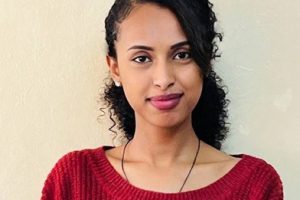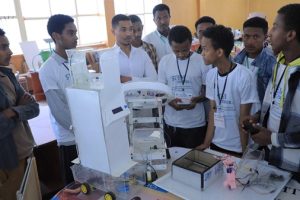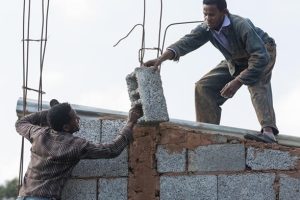
The house that made me isn’t one I’ve ever lived in. It isn’t even in this country…
…The house that made me is one I helped build with Habitat for Humanity for Almaz and her three children in Debre Berhan, Ethiopia over the period of a few weeks in 2012.
Seeing the transformation that a basic house could make to Almaz and her family, in terms of their health, safety, education, life chances, and economic prospects had a profound effect on me.
I resolved to redouble my efforts to provide good-quality, safe, secure, and affordable homes through my professional life.
I was also inspired by the self-organising work of the community and learned that helping people to help themselves and their families is much more powerful than doing it for them.
Ethiopia has a population of over 100 million people and a rich and diverse history stretching back to the emergence of modern humans.
The landscape is incredibly varied from modern cities and slums, to rolling, green hills and deep wide valleys.
It also has some truly awful housing conditions.
Almaz and her family lived in one of a collection of one-room corrugated iron huts, with four people sleeping in one bed, their walls insulated with newspaper.
They had no running water or sanitation and faced considerable health risks from fire and contamination.
Their new home was constructed using eucalyptus poles, ‘chika’ (a mixture of mud and straw), cement, and correlated iron. It had two rooms and an outhouse toilet – with running water to an outside tap.
It was basic by UK standards, but for Almaz and her family it was a home that would make everything possible.
Space to study made a real difference to her children’s educational progression and career prospects.
Running water, sanitation, security, and fire breaks gave the whole family a much better chance of staying safe and healthy.
The home also became an asset they could use to secure borrowing against, opening up opportunities to invest in their own future.
I was only there for a few weeks, but it was certainly the hardest physical work I’ve ever done, digging trench foundations in the hard African clay with pickaxes, hand mixing cement and endless shovelling, all made considerably harder by the lower oxygen content of the air due to the high altitude.
I didn’t kid myself that my physical exertions made any significant difference to the speed of construction, and the relatively small amount of money I raised barely covered the costs of one home.
But Almaz and her family were visibly uplifted at the thought of strangers travelling thousands of miles to help them out and of their stories being shared far and wide so more people could be helped in future.
Thankfully, it wasn’t just me building the homes. I worked alongside the community of people that would live in them as they contributed “sweat equity”.
They didn’t just work on their own homes; it was a collaborative effort with everyone working together on the whole site.
This was faster, more efficient, and created lasting bonds and friendships.
I could literally see the community being built in front of my eyes.
Communities working together with common aims to thrive and succeed are incredibly powerful.
I think they hold the answer to many of the challenges we face.
The Ethiopian Herald November29, 2019
BY JAMIE RATCLIFF





